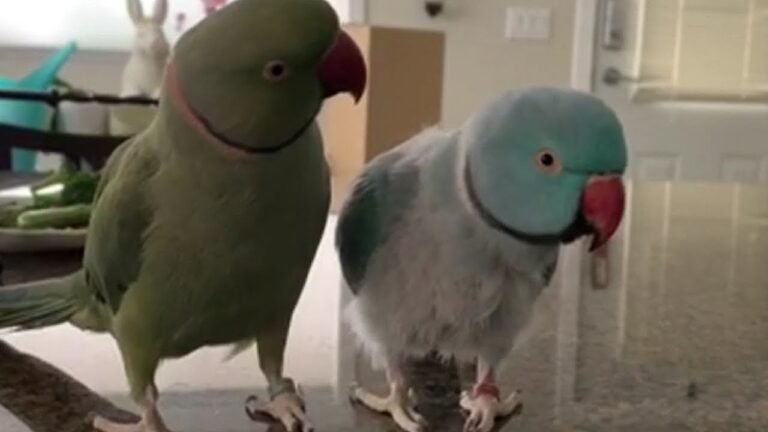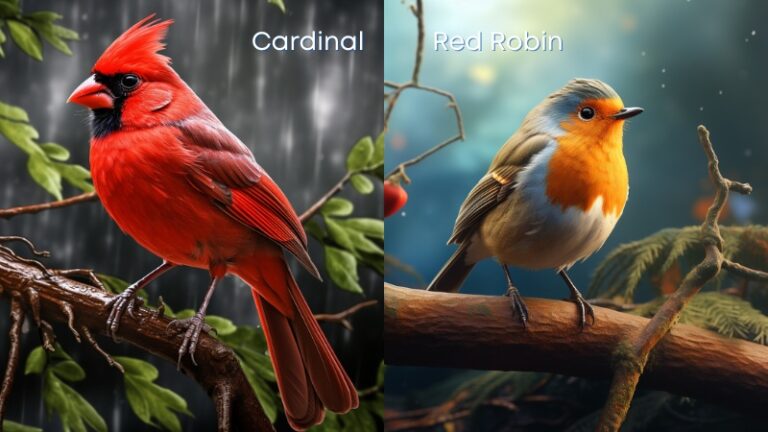33 Arctic Birds: Exploring the Wonders of the Icy Skies
Arctic birds, with their resilient nature and remarkable adaptations, are the true masters of survival in one of the harshest environments on Earth.
From the vast tundras of the Arctic region to the icy shores and freezing waters, these avian inhabitants have developed unique characteristics that allow them to thrive in extreme conditions.
In this article, we will embark on a journey through the Arctic skies and uncover the fascinating world of these remarkable creatures.
The Arctic Region: A Challenging Habitat
The Arctic region, located near the North Pole, is characterized by its frozen landscapes, long dark winters, and relatively brief summers.
This extreme environment poses numerous challenges for wildlife, making it a demanding habitat for birds.
However, Arctic birds have adapted to these conditions over time, displaying incredible strategies for survival.
Adaptations for Survival
One of the most remarkable adaptations of Arctic birds is their ability to withstand extreme cold.
Their feathers provide excellent insulation, acting as a barrier against freezing temperatures.
Additionally, these birds have a higher number of down feathers compared to their counterparts in warmer climates, offering them extra protection.
Another crucial adaptation is their compact body size. Compact bodies help reduce heat loss by minimizing the surface area through which heat can escape.
This adaptation is particularly crucial during the breeding season when maintaining body warmth is vital for raising young chicks.
A Closer Look at Arctic Birds
Let’s now delve into the captivating world of Arctic birds. Below, we present a list of 33 Arctic bird species, along with their most intriguing characteristics and adaptations.
1. Arctic Tern:
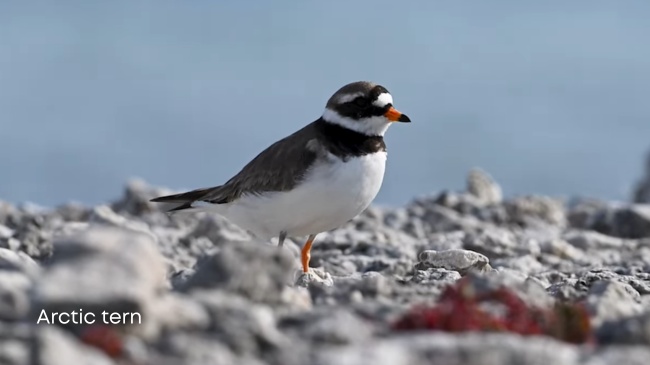
Known for its impressive migratory journey, the Arctic Tern holds the record for the longest migration of any bird, traveling from the Arctic to the Antarctic and back.
2. Snowy Owl:
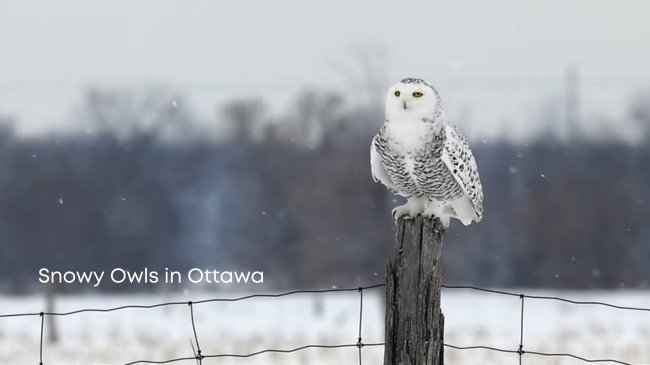
With its striking white plumage and piercing yellow eyes, the Snowy Owl is a master of camouflage in the snowy landscapes of the Arctic.
3. Puffins:
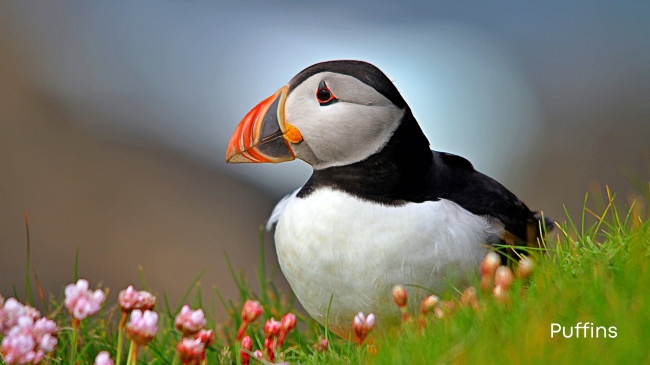
These charismatic birds are excellent divers, using their wings to “fly” underwater in search of small fish, their primary source of food.
4. Gyrfalcon:
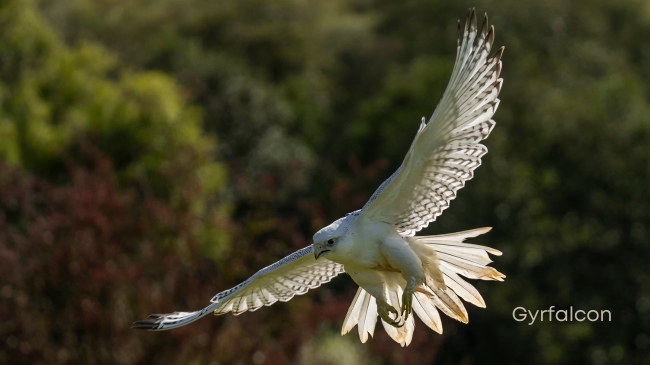
The Gyrfalcon, the largest falcon species, has adapted to the harsh Arctic conditions by developing a thick layer of insulating feathers.
5. Common Eider:
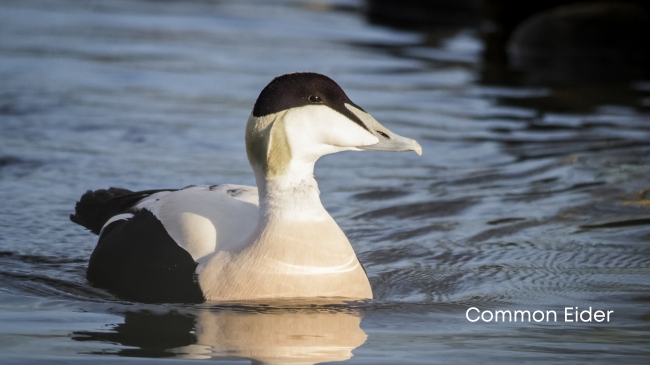
These large sea ducks are known for their unique breeding behavior. They form dense colonies and employ a communal nesting strategy for protection against predators.
6. Ivory Gull:
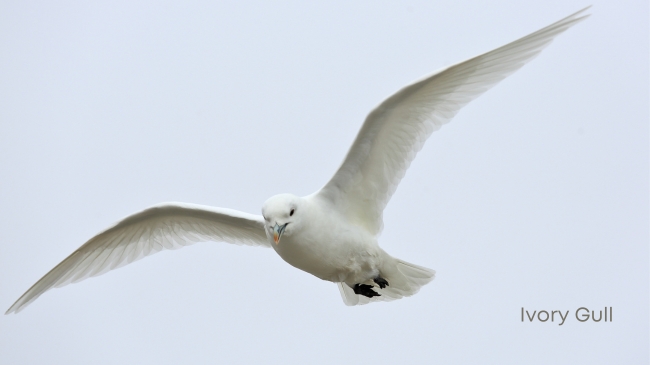
The Ivory Gull is a stunning bird with pure white plumage, which helps it blend seamlessly into its icy surroundings.
7. King Eider:

Males of this species exhibit striking plumage during the breeding season, with a vibrant mix of colors on their heads.
8. Northern Fulmar:
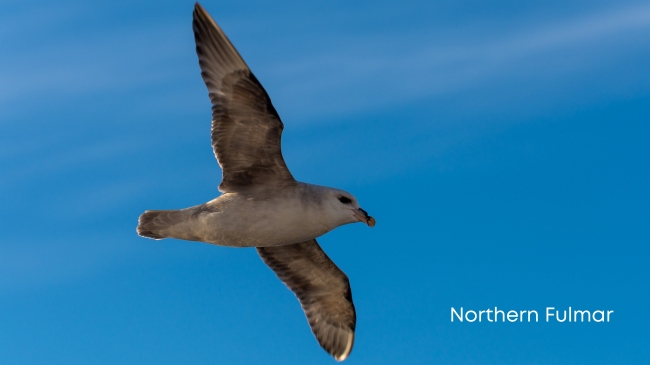
Fulmars are exceptional gliders, effortlessly navigating the Arctic skies using air currents and strong wings.
9. Arctic Loon:

Known for their haunting calls, Arctic Loons are excellent divers, capable of reaching depths of up to 200 feet (60 meters) in search of fish.
10. Tufted Puffin:
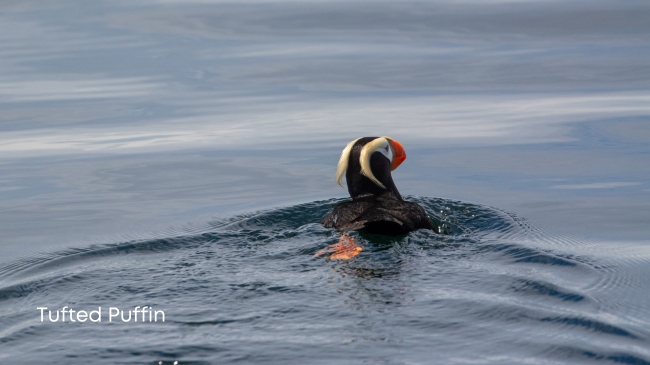
These seabirds boast vibrant bills, which become brightly colored during the breeding season to attract mates.
11. Common Murre:
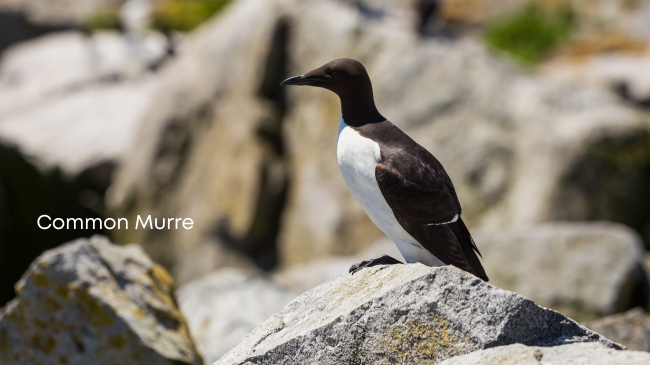
With their sleek bodies and powerful wings, Common Murres are exceptional swimmers, propelling themselves underwater with remarkable agility.
12. Snow Bunting:
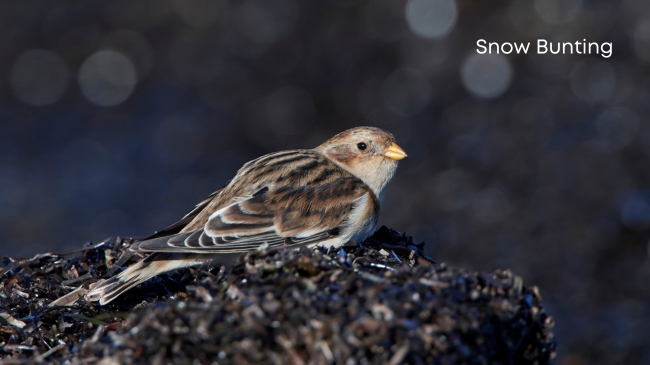
These small, sparrow-like birds survive the frigid Arctic winters by burrowing into the snow for warmth.
13. Ross’s Gull:
With its delicate pink plumage and graceful flight, Ross’s Gull is a true Arctic gem.
14. Long-tailed Jaeger:
These agile predators are skilled in aerial acrobatics, harassing other birds in mid-flight to steal their food.
15. Red-throated Loon:
With its haunting call and vibrant red-throat patch, the Red-throated Loon is a common sight in Arctic waters during the breeding season.
16. Arctic Skua:
These opportunistic birds are known for their piratical behavior, stealing food from other seabirds and even dive-bombing larger predators to protect their nests.
17. Sabine’s Gull:
This striking gull species has a unique appearance, with a distinctive black hood and a graceful, buoyant flight.
18. Dovekie:
Also known as the Little Auk, these small seabirds are exceptional divers, using their wings to propel themselves underwater in search of prey.
19. Lapland Longspur:
These tiny songbirds have a remarkable ability to withstand extreme temperatures, thanks to their thick plumage and fluffy under feathers.
20. Iceland Gull:
A master of scavenging, the Iceland Gull can be found feeding on carrion, marine invertebrates, and discarded scraps in the Arctic.
21. Spectacled Eider:
This unique species is named for the distinctive white patches around its eyes, resembling a pair of spectacles.
22. Short-eared Owl:
These owls are known for their diurnal hunting habits, taking advantage of the continuous daylight during the Arctic summer.
23. Northern Wheatear:
These small migratory birds undertake incredible journeys, flying thousands of miles from their wintering grounds to breed in the Arctic.
24. Red-necked Phalarope:
Male Red-necked Phalaropes take on the role of incubating eggs and raising the young, while the females compete for mates.
25. Arctic Warbler:
This small, insect-eating bird travels remarkable distances to breed in the Arctic, navigating its way using the Earth’s magnetic field.
26. Purple Sandpiper:
These tough wading birds can be found along the rocky coastlines of the Arctic, foraging for invertebrates in the intertidal zone.
27. Barnacle Goose:
Barnacle Geese undertake lengthy migrations, traveling from their breeding grounds in the Arctic to their wintering grounds in temperate regions.
28. White-winged Scoter:
These diving ducks have powerful bills specialized for crushing and feeding on mollusks and crustaceans.
29. Red Phalarope:
Red Phalaropes have a unique feeding behavior, spinning in circles on the water’s surface to create a whirlpool that brings small prey closer to the surface.
30. Glaucous Gull:
The Glaucous Gull is a large, pale-colored gull that scavenges on carcasses and preys on small birds and fish in the Arctic.
31. Black-legged Kittiwake:
These graceful seabirds form large colonies on cliffs, nesting in tight spaces to protect their young from predators.
32. Arctic Fox:
Although not a bird, the Arctic Fox plays a significant role in the ecosystem, as it scavenges on abandoned nests and preys on vulnerable chicks.
33. Common Redpoll:
These small finches survive the harsh Arctic winters by feasting on seeds and utilizing specialized adaptations to keep warm.
Common Facts about Arctic Birds
To provide a quick overview, here are some common facts about Arctic birds and their brief explanations:
Migration
Many Arctic birds undertake long migrations to breed in the Arctic during the short summer season.
Plumage
Arctic birds often have white or camouflaged plumage to blend in with the snowy landscapes and evade predators.
Diet
Arctic birds primarily feed on fish, invertebrates, and small mammals. They have adapted their feeding strategies to exploit the available food sources in their icy habitats.
Nesting
Arctic birds typically nest in colonies, offering safety in numbers and increased vigilance against predators.
Breeding Behavior
Some Arctic bird species engage in elaborate courtship rituals and displays to attract mates, ensuring successful reproduction in the short breeding season.
Parental Care
Both parents play a role in incubating eggs and raising the young, sharing the responsibilities of feeding and protection.
Adaptations to Cold
Arctic birds have evolved physiological and anatomical adaptations to withstand extreme colds, such as thick down feathers, compact body size, and specialized circulation systems.
Predators
Arctic birds face threats from predators such as Arctic foxes, polar bears, and larger avian species.
They employ various tactics, including vigilant nesting behaviors and evasive flight patterns, to minimize predation risks.
Hunting Techniques
Many Arctic birds are skilled hunters, employing various techniques such as aerial diving, plunge diving, and surface skimming to capture their prey.
Climate Change Impact
Climate change poses significant challenges to Arctic birds, affecting their habitats, food availability, and migration patterns.
Understanding and mitigating these impacts is crucial for their long-term survival.
Final thoughts
Arctic birds are awe-inspiring creatures that have mastered the art of survival in one of the most challenging environments on Earth.
Their adaptations, remarkable behaviors, and resilience in the face of harsh conditions make them a subject of fascination and admiration.
By delving into their world, we gain a deeper appreciation for the wonders of nature and the incredible diversity of life that exists even in the most extreme corners of our planet.

